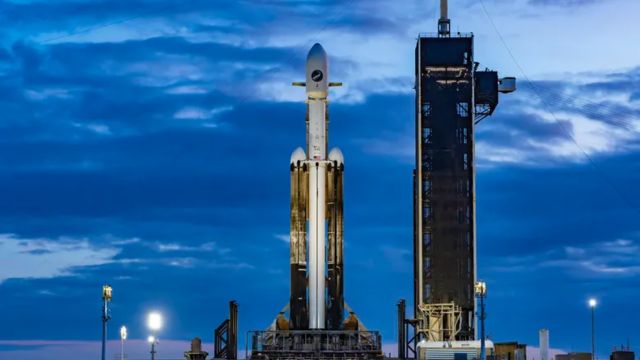Historic Launch: SpaceX’s Falcon Heavy Rocket Sends X-37B into Space from Kennedy Space Center
The Pentagon’s covert X-37B spacecraft was successfully launched by Elon Musk’s SpaceX on Thursday, following a several-week delay caused by weather and other factors.
For the first time, SpaceX launched the Space Force’s X-37B on a Falcon Heavy rocket from Florida’s Kennedy Space Center on Thursday night. The spacecraft was launched into orbit six times already, using either SpaceX Falcon 9 or United Launch Alliance Atlas V rockets.
The launch was originally slated for December 10, but bad weather forced several postponements that week, including one that occurred just before one of the planned liftoffs, which SpaceX described as a “ground side issue”. According to SpaceX, the delays allowed their teams to carry out further system inspections before this launch window.

In partnership with the Space Force, the Air Force’s Rapid Capabilities Office manages the robotic, unmanned Boeing X-37B spacecraft. Its design, which is based on an earlier version of the spacecraft employed by the National Aeronautics and Space Administration (NASA), is reminiscent of a scaled-down version of the Space Shuttle.
The X-37B, also called the Orbital Test Vehicle, is intended to be a reusable spacecraft that is propelled vertically into orbit by a launch vehicle and eventually re-enters Earth’s atmosphere in the form of a spaceplane that lands horizontally on a runway, much like the Space Shuttle.
According to the Air Force, it is the first spacecraft to be able to return spaceborne experiments to Earth for processing since NASA’s shuttle orbiter.
The agency has released some broad data regarding the technologies evaluated by the X-37B, but many details regarding its cargo, operations, and testing are still kept under wraps. According to a fact sheet, it functions as a test bed for advanced materials, advanced propulsion systems, lightweight electromechanical flight systems, thermal protection systems, avionics, high-temperature structures and seals, advanced guidance, navigation, and control, and autonomous orbital flight.

Long-duration missions (at least 270 days), while some have lasted much longer, are intended for the X-37B. On its fifth mission, the X-37B spent 780 days in orbit; on its sixth mission, which took place from May 17, 2020, to November 12, 2022, it spent 908 days in orbit.
In 2019, Heather Wilson, the former secretary of the Air Force, called the X-37 “fascinating” due to its ability to change course when near Earth. She went on to say “means our adversaries don’t know… where it’s going to come up next.”
After making its debut in April 2010, the X-37 mission is currently on its sixth spaceflight.
A little more than eight minutes after launch, the SpaceX Falcon Heavy’s side booster rockets are expected to make a recovery landing in two of the landing zones at the Cape Canaveral Space Force Station. This mission was the Rockets’ sixth.
